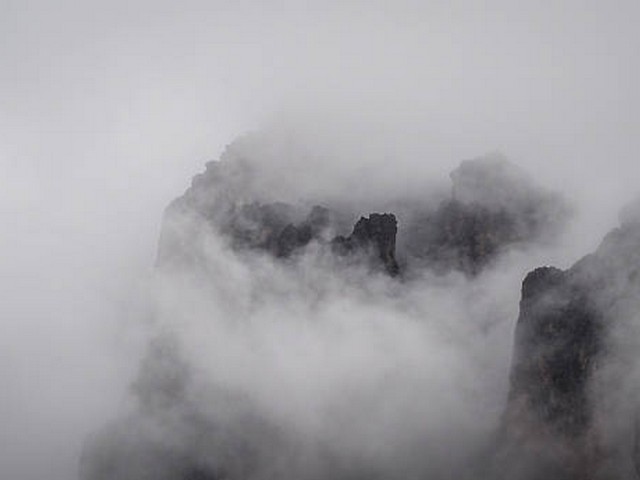Embark on a Journey of a Lifetime: Best Time to Climb Kilimanjaro Via Lemosho Route
Imagine standing atop Africa’s highest peak, breathing in the crisp, fresh air as you gaze over a sea of clouds. Climbing Mount Kilimanjaro is not just about reaching the summit; it’s about embracing a profound journey of self-discovery and adventure. Among the several routes leading to the peak, the Lemosho Route stands out for its scenic diversity and a higher success rate. In this blog, we, at Kilimanjaro Centre for Trekking and Ecotourism (KCTE), guide you through the best time to climb Kilimanjaro via the Lemosho Route, ensuring your expedition is nothing short of spectacular.
Why Choose the Lemosho Route?
The Lemosho Route is renowned for its stunning natural beauty, optimal acclimatization opportunities, and its strategic start point which enhances the chances of a successful summit. This route offers climbers a serene, uncrowded path through some of Kilimanjaro’s most picturesque landscapes, including lush rainforests, vast moorlands, and stark alpine deserts.
The Journey Begins: When to Set Foot on Lemosho
Kilimanjaro’s weather is predominantly determined by two main seasons: the dry season and the wet season. Deciding when to climb can significantly impact your experience.
1. The Dry Seasons: Optimal Climbing Conditions
- June to October: This period marks the main dry season on Kilimanjaro and is considered the peak season for trekking. The weather is generally stable and visibility is excellent. As these months coincide with summer vacations in many countries, the route can be a bit crowded.
- January to Mid-March: This is another popular window for climbing Kilimanjaro. The weather is relatively dry, and the mountain is less crowded compared to the June-October period. This season offers the added spectacle of clearer skies, ideal for stargazing enthusiasts.
2. Off-Peak Seasons: The Untold Adventure
- November, December, and Late March to May: These months typically experience more rainfall, making the trek challenging but also offering a unique perspective of Kilimanjaro’s ecosystem. The routes are less crowded, and the rainforests along the Lemosho Route are lush and vibrant. For those who don’t mind the wetter conditions, this can be a magical time to climb.
What Makes Each Season Unique?
Each season on Kilimanjaro brings its own flavor and challenges:
- Dry Season Advantage: Besides the obvious benefit of less rainfall and clearer trails, the dry season offers spectacular sunrises and sunsets, unobstructed by clouds. The night skies are clearer, allowing for stunning views of the Milky Way.
- Wet Season Wonder: The rains bring life to Kilimanjaro’s flora. The rainforest section of the Lemosho Route bursts into life, with rivers and waterfalls at full flow and the chance to see Kilimanjaro’s plant life in its most vibrant form.
Planning Your Climb: Tips for a Successful Summit
Climbing Kilimanjaro requires preparation, irrespective of the season. Here are some tips to ensure you are well-prepared:
- Training: Begin a training regimen months in advance, focusing on cardiovascular fitness, strength training, and hiking.
- Gear: Invest in quality gear suitable for all possible weather conditions. Layering is key to handling Kilimanjaro’s varying temperatures.
- Guidance: Choose a reputable tour operator like Kilimanjaro Centre for Trekking and Ecotourism (KCTE). Experienced guides can make a significant difference in the success and enjoyment of your climb.
Why Climb with KCTE?
At KCTE, we specialize in providing personalized and sustainable climbing experiences. Our seasoned guides, who are native to the region, not only enhance your safety but also enrich your journey with insights into the local ecology and culture. We ensure the highest standards of safety and comfort, all while maintaining an environmentally friendly footprint.
Climbers’ Tales: Testimonials from the Roof of Africa
Hear from those who’ve embraced the Lemosho Route with us:
- "Climbing with KCTE was an unforgettable experience! Their attention to detail and the expertise of the guides made us feel safe and cared for throughout our journey." – Sarah, UK.
- "The Lemosho Route was breathtaking! Thanks to KCTE, we experienced the beauty of Kilimanjaro in all its glory, even during the wet season." – John, USA.
Frequently Asked Questions
Q1: How long does it take to climb Kilimanjaro via the Lemosho Route?
A1: The Lemosho Route typically takes 7 to 8 days, allowing for better acclimatization and higher success rates.
Q2: What is the difficulty level of the Lemosho Route?
A2: It is considered moderate to challenging. Prior hiking experience is beneficial, though not mandatory.
Q3: Are there any age restrictions for climbing Kilimanjaro?
A3: Climbers should be at least 10 years old. There is no upper age limit, but older climbers should have a fitness check-up.
Q4: What is included in KCTE’s Kilimanjaro climb packages?
A4: Our packages include airport transfers, accommodations before and after the climb, all park fees, salaries for the crew, meals on the mountain, and emergency evacuation services.
Ready to Conquer Kilimanjaro?
Choosing the best time to climb Kilimanjaro via the Lemosho Route can significantly influence your climbing experience. Whether you seek the clear, crisp days of the dry season or the lush landscapes of the wet season, KCTE is here to guide you to the summit. Start planning your adventure today and join us at Kilimanjaro Centre for Trekking and Ecotourism for the journey of a lifetime. Reach out to us, and let’s make your dream climb a reality!




